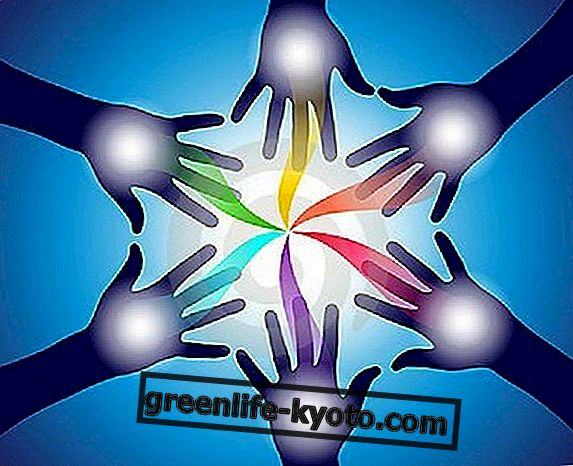A popular proverb reads: "One does not sleep to sleep, one sleeps in order to act . In this simple sentence there are many truths about sleep, its physiology and its function. On average about 29-30% of the day of a healthy adult is dedicated to sleep and over the lifetime this percentage undergoes considerable fluctuations, due to various factors, but the constant is given by the need for a share of sleep to be able to live.
>
>
>

How to define sleep
"Temporary, spontaneous and periodic cessation of every higher psychic activity, characterized by the loss of consciousness of the external world, by the more or less complete abolition of the functions of the nervous centers and by the slowing down of the functions of organic life" (A. Gabrielli, Grande Dizionario Italian - Ed. Hoepli).
There are various definitions of sleep, but taken individually they are not complete and if compared with the above mentioned proverb, they do not include all the implications that the act of sleeping brings with it. Because rightly "one does not sleep only to sleep", that is, it is not an end in itself, nor is it a static condition.
In the different phases of sleep the central nervous system and part of the peripheral nervous system, the autonomous or vegetative system, establish important cellular and neuronal interactions, for some functions they are even superior to the waking state. "You sleep to be able to act": sleep is functional to the energetic regeneration of the body, it is a consolidator of memory and in this regard different theories are associated and compensated to help answer the big question "why do we sleep?".
But you sleep to be able to act ... even in your sleep! The depression of consciousness and voluntary motor activity give way to an organic and psychic world made up of energies, forces and levels of subtle interactions that complete the human being in his constant training. The phenomenon of sleep involves the whole zoological scale, except for the lower forms, and is considered as a moment of recovery.
Even nature lives its sleep, both the one linked to the nictemeral phase, and the seasonal one, the winter, in which everything subsides, some animals fall into hibernation, to rest for the long year, protect themselves and restore themselves in view of the spring awakening.
You can learn more about the properties and use of herbs that help you sleep

The phases of sleep
The act of sleeping involves a mental activity punctuated by rhythmic sequences of brain waves . The waking state is characterized by Beta frequencies, very short and rapid waves, which increase when the brain is called to deal with logical or mathematical complexity.
When we pass from waking to sleep instead the Beta frequencies disappear and the alternation of Alpha frequencies, characteristic of a state of rest, begins with Theta frequencies typical of a pre-conscious condition
In the first phase of sleep, Theta waves follow a period of Delta waves, which belong to the unconscious state, to deeper sleep . This rhythm is repeated every 90 minutes passing from long and slow waves to shorter and faster waves and is defined as the NON-REM phase (Non Rapid Eye Movement), followed by the REM phase, in which more rapid Delta waves are revealed. brief appearances of Alpha and Beta waves. REM sleep is the sleep of dreams, in which the sub-conscious is activated.
The myth of sleep
Every culture celebrates sleep and its myths and attributes to it various symbologies, from the ancient Greeks, to the Egyptians, from the Romans to the Nordic peoples, from the shamans of Latin America to the Yogis of the far East. These legends represent an important key to interpreting what profound values sleep has on the mind and on the human body.
In Hesiod's Cosmogony we read that in the beginning only the Darkness from which Chaos emerged existed. From their union Day, Night, Air and Erebus were born. Erebus and the Night gave birth to twins, Thanatos, god of death and Hypnos, god of sleep. A Persian proverb says " sleep is the brother of death ".
On the symbolic level, in fact, sleep is closely associated with death, due to the loss of consciousness of external reality on the one hand and to the dream component that allows the individual to leave his physical body and wander through subtle worlds on the other. Also the etymological analysis of some common terms such as "cemetery" testify to this close symbolic link: from the Greek koimeterion = place where one sleeps, or "rise again" from the Latin surgere = to get up. Common places reproduce this association, just think of statements like "dying of sleep", "eternal sleep". Reversing the analysis plans in order not to fall into an overly sinister symbology, it is possible to affirm that every morning awakening represents a new birth, the new day is a new portion of life.
According to the myth, Hypnos slept in a cave near the Oblio river and his job was to remove men from the tribulations of life for a few hours, putting them to sleep and causing them to dream. In this activity he was assisted by his son Morpheus, usually taking the shape of the dreamed people and appearing with a bouquet of poppies with hallucinogenic power.
This myth is explanatory of how sleep can represent a refuge and a refreshment from the state of consciousness and activity, both for the body and the mind: falling into the embrace of Morpheus is inviting and the natural way to seal an intense day of waking .













